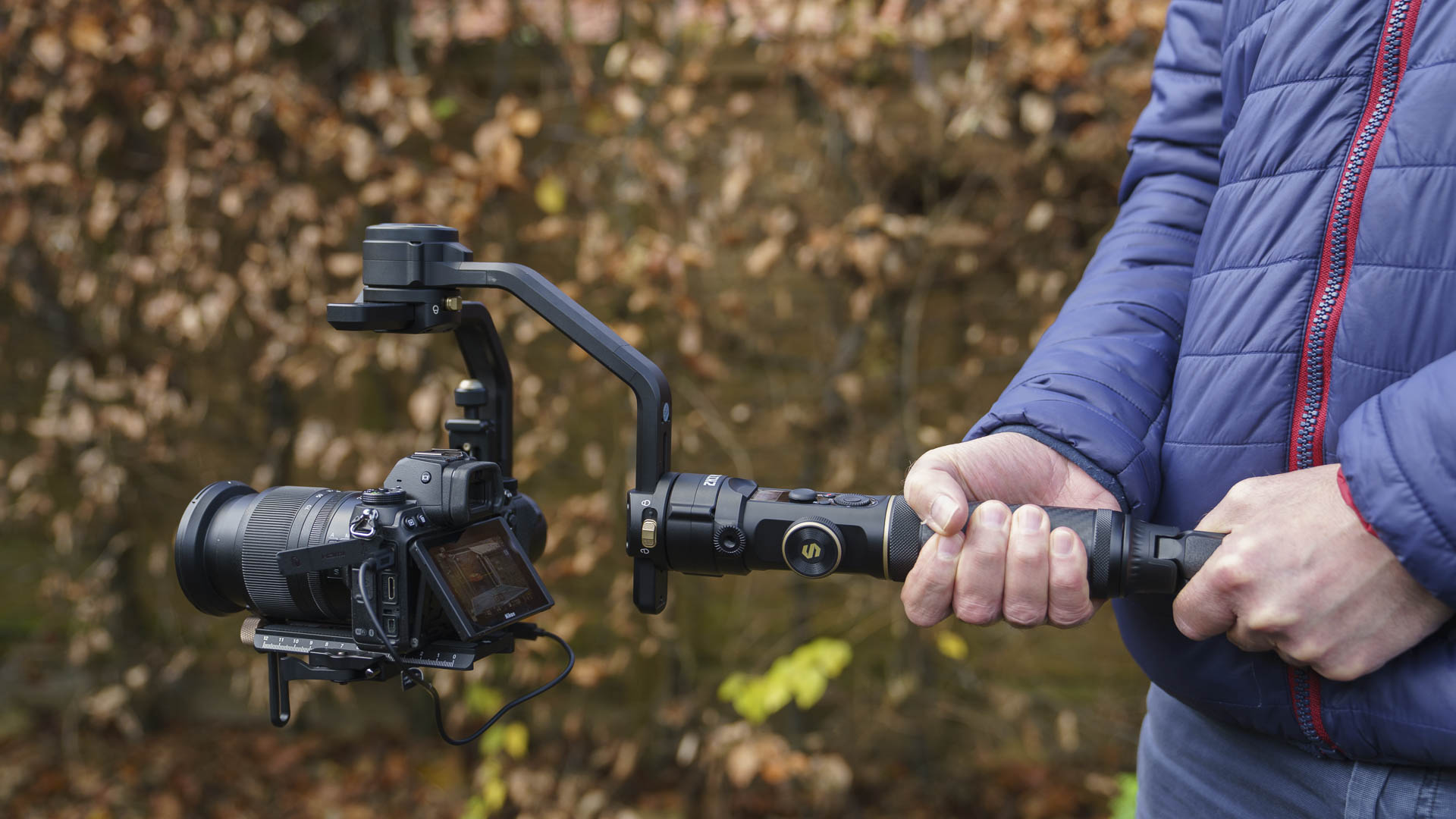Gimbal vs IBIS vs digital stabilization: which is best?
YouTuber Arthur R has the answer in his intriguing three-way Sony camera test

When we test cameras for video, we always check out the effectiveness of the stabilization, whether it’s IBIS, lens stabilisation or digital stabilization. We also look at these in the context of what we know we can get from a gimbal.
But gimbals are big, heavy and often expensive. They’re also a pain to set up. So if we can get away without using one, then that’s got to be good news.
However, our experience is that IBIS, lens IS, hybrid IS or digital stabilization just aren’t the same as a gimbal. The best can be uncannily steady if you’re shooting from a static camera position, but if you start trying to use deliberate camera movements or run and gun style filming, they quickly go to pieces.
But what Arthur R has done in his Sony stabilization video is take three Sony APS-C cameras, one with IBIS (Sony A6600) one with digital stabilization (Sony ZV-E10) and one with no stabilization but a gimbal instead (Sony A6100). We came across his video on YouTube and thought it deserved to reach a wider audience.
Check out Arthur R's YouTube video below:
The results are very interesting! The gimbal wins, as you would expect, but in second place is the digital stabilization of the ZV-E10, which is a long way ahead of the IBIS of the A6600.
This ties in with our own experience of stabilization systems. IBIS especially is fine for static shots, and we agree with Arthur R’s observation that Sony’s IBIS is really not that good. He is impressed with the digital stabilization of the ZV-E10, but points out that it comes with a heavy crop factor, restricting the angle of view of your lenses.
Get the Digital Camera World Newsletter
The best camera deals, reviews, product advice, and unmissable photography news, direct to your inbox!
A lot of photographers will have a deep mistrust of digital stabilization. It makes no sense in a stills camera, where at best it applies a bit of fake sharpening – it has nothing to go on. But in video, digital stabilization makes a lot of sense. Here, it’s used to check the framing of successive frames and shift them individually to keep them aligned. This is why there’s a crop factor – cameras have to add in some framing leeway to allow for these frame-by-frame shifts.
One thing we would say is that if you use digital stabilization in-camera you’re committed to that crop factor and to the camera’s stabilization attempts. If you record unstabilized footage you can stabilize it in video editing software with a lot more control and perhaps a lot more success.

Rod is an independent photography journalist and editor, and a long-standing Digital Camera World contributor, having previously worked as DCW's Group Reviews editor. Before that he has been technique editor on N-Photo, Head of Testing for the photography division and Camera Channel editor on TechRadar, as well as contributing to many other publications. He has been writing about photography technique, photo editing and digital cameras since they first appeared, and before that began his career writing about film photography. He has used and reviewed practically every interchangeable lens camera launched in the past 20 years, from entry-level DSLRs to medium format cameras, together with lenses, tripods, gimbals, light meters, camera bags and more. Rod has his own camera gear blog at fotovolo.com but also writes about photo-editing applications and techniques at lifeafterphotoshop.com
